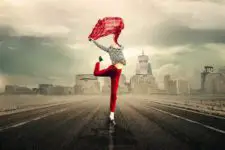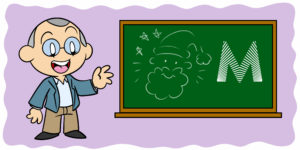A Christmas Carol, The Catcher in the Rye, Heart of Darkness. Other than stellar writing and compelling characters, what makes a story stand the test of time? How do certain novels achieve the lofty ‘classic’ status while others fade into relative obscurity? The answer is all in the subtext. Authors like Charles Dickens, J.D Salinger and Joseph Conrad use literary tools – theme, allegory and symbolism – to layer deeper meaning into their work, leaving them open to endless reinterpretation and enduring appeal. Without those, readers would probably put these books down with little more to think about than the fact that some people are poorer than others during Christmas; rich American teenagers are full of angst, and the Congo River wouldn’t have been an ideal holiday destination in the late 1800’s.
There are, of course, lots of other literary tools that writers can use for similar effect (some of which we’ve covered before) but these three make for a great ‘starter pack’. In this article, I’ll go through what each of them is, how to use them effectively, and how they can give your story an elongated life of its own.
Theme
What is it?
Essentially, this is the underlying message or ‘big idea’ of a story. There can be more than one present, usually divided bilaterally into ‘major’ and ‘minor’. The major theme is identified through continuous or strong repetition throughout the narrative, whereas a minor one is identified by being less recurrent and therefore less significant. A theme is acutely different from a subject, which is the topical foundation of the story. Theme is the author’s perspective on that subject. The subject of Steinbeck’s Of Mice and Men, for instance, is the Great Depression, while the major theme is loneliness and a minor theme is powerlessness.
How do I use it?
Themes are usually explored through a variety of different angles – there isn’t just one lonely or powerless character in Of Mice and Men, but a dozen of them, all interacting with the same theme in different ways and as different people. Theme should be explored in the way that your characters think and feel, the conversations they have with one another, their experiences, and through the events happening around them. Themes can also be explored through symbolism, which I’ll touch on later.
What does it do?
Theme can help your reader to better understand your character’s actions, reactions, struggles and feelings. It can also help you to cohesively tie different narrative strands and events together. Use of a concurrent theme should leave your reader with the sense that your story has a ‘point’ beyond mere entertainment value, and that you as a writer have an interesting or unique perspective to offer.
A strong theme brings your story together, giving it a ‘point’. Click To TweetAllegory
What is it?
Allegory differs from theme in that its purpose is not simply communicating an author’s point of view, but imparting or breaking down a moral, political or spiritual lesson to the reader in a conceptual way. It’s especially common in fables, fairy tales or religious works, and usually an entire narrative is constructed around a particular allegory. Animal Farm – framed as a satirical ‘fairy story’ by George Orwell – uses farm animals as stand-ins for real-life figures involved in the Russian Revolution and the events leading up to WWI, the narrative being an allegory for how Orwell viewed the true nature of the revolution – greedy and corrupt.
How do I use it?
An allegory’s lesson can be preached through characters, events and symbols. In the case of Animal Farm, Orwell doesn’t waste a single facet of the story to communicate his stern warning. ‘Animalism’ represents communism, Manor Farm represents Russia, Mr. Jones (the farmer) represents a Russian Tsar, while Old Major, Snowball and Napoleon represent Karl Marx/Vladimir Lenin, Leon Trotsky and Stalin respectively. Even the animal’s horn and hoof flag mimics the hammer and sickle symbol for communism.
What does it do?
Writers can use allegory to make their work multi-layered and their characters multidimensional. Allegorical meaning provides a deeper and wider subtext to the literal representation of a character or event, and – in the case of Animal Farm – can extend the life of a literary work even if it is firmly rooted in a very specific time or place.
Allegory lends contemporary stories a timeless quality, as in Animal Farm.Click To TweetAllegory also offers the ability to discuss sensitive topics in an approachable way. Arthur Miller’s The Crucible took aim at the political climate of its time, saying the unsayable through his allegorical ‘witch hunt’ story. Issues of race and gender are commonly explored through allegory, which can provide an accessible way for readers to navigate complex philosophies and ideas. Allegory also allows for outright dramatization of real experiences; many YA stories include characters having to fit into houses or groups because this allegory for young social life hits home for readers.
Symbolism
What is it?
Although symbols are used within allegories to preach the writer’s message, symbolism is distinctly different. An allegory has an entire narrative constructed upon it, whereas symbolism is localized to one particular object, figure, word, event or expression that is given abstract as well as literal meaning. A handshake, for instance, can symbolize an agreement being reached between two opposing sides. Eggs during Easter are used to symbolize new life at the start of Spring… and also the arrival of excessive amounts of holiday-sanctioned chocolate-eating.
How do I use it?
Symbolism can be created using figures of speech – metaphors, similes and allegories. There’s also a huge library of objects, colors and living creatures whose assigned symbolism has become firmly lodged in our collective cultural consciousness.
For example, ravens are a common symbol for death and red roses are a common symbol for love. While these can be useful shortcuts to convey meaning, it’s always more interesting to try and create your own unique symbols rather than rely on worn-out clichés. The aforementioned red rose, for instance, is cleverly used in Disney’s Beauty and the Beast as a multi-layered symbol. Alone, the rose accentuates the romance central to the story, but its encasement in glass goes on to symbolize the fragility of the Beast’s suppressed humanity. As it begins to wilt and die, he steps further and further away from redemption with each falling petal.
Established symbols have value, but beware the cliché. Click To TweetSymbols can also be interpreted in different ways depending on when, how and where they are used, or who is involved, which is something you’ll need to be mindful of. In the case of painter Georgia O’Keefe, misinterpretation could lead to enduring false myths about what your work really means.
What does it do?
Simply put, symbolism adds double-meaning – an obvious literal meaning and one that’s more conceptual.
On top of this, establishing a symbol locks an idea into a readily identifiable form. This allows for easy communication of ideas and interactions between different types of symbol, as in the example of the rose above.
Symbolism packages complex ideas into arresting images.Click To TweetIn The Power of the Dog, paper flowers are used as a symbol of a character’s intellect, bond with his mother, and divergence from the traditional masculinity of the culture around him. When the antagonist sneers at these flowers, it communicates a huge rift between their personal ideologies that’s clear to the reader without ever having to be stated outright.
Establishing a symbol early on can be used to separate the explanation of an idea from its immediate use – the writer no longer has to explain why something matters at the moment it matters, allowing for more engaging prose where it counts.
Stories that outlive their writers
Theme, allegory and symbol have the power to immortalize literary works through the expression of universal and timeless ideas. The subject of a story could be highly topical or anchored to a very specific time, place or zeitgeist, but by effectively using these literary tools, a writer can widen the appeal of their work beyond the boundaries of class, culture, creed or generation.
There’s a reason why people return to Orwell’s 1984 or Margaret’s Atwood’s The Handmaid’s Tale in times of political unrest, or why they return to religious texts when they’re looking for answers to life’s big questions. We return to these stories first because they’re damn good stories, but also because they communicate in a way that remains personal and immediate despite the passing of time. Theme, allegory and symbolism elevate a story, making it about more than just the specific events that take place, and maybe even altering our perception of the world around us.
For more on great writing devices that’ll improve your prose, check out Why More Authors Should Harness The Power Of Conceit and Your Book Is Crying Out For A Volta – Here’s How To Deliver. Or tell me about your favorite literary symbols and treasured allegories in the comments.






1 thought on “Your Quick And Easy Guide To Theme, Allegory And Symbolism”
A lovely breakdown. Thank you.